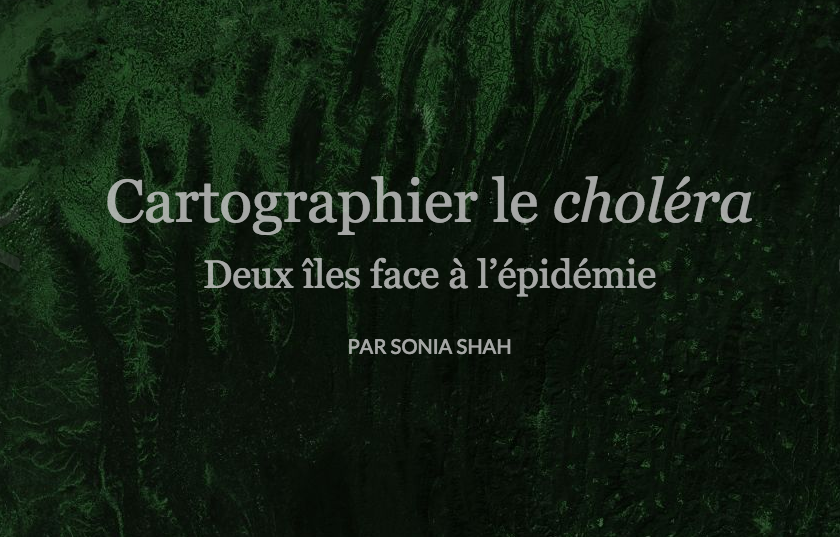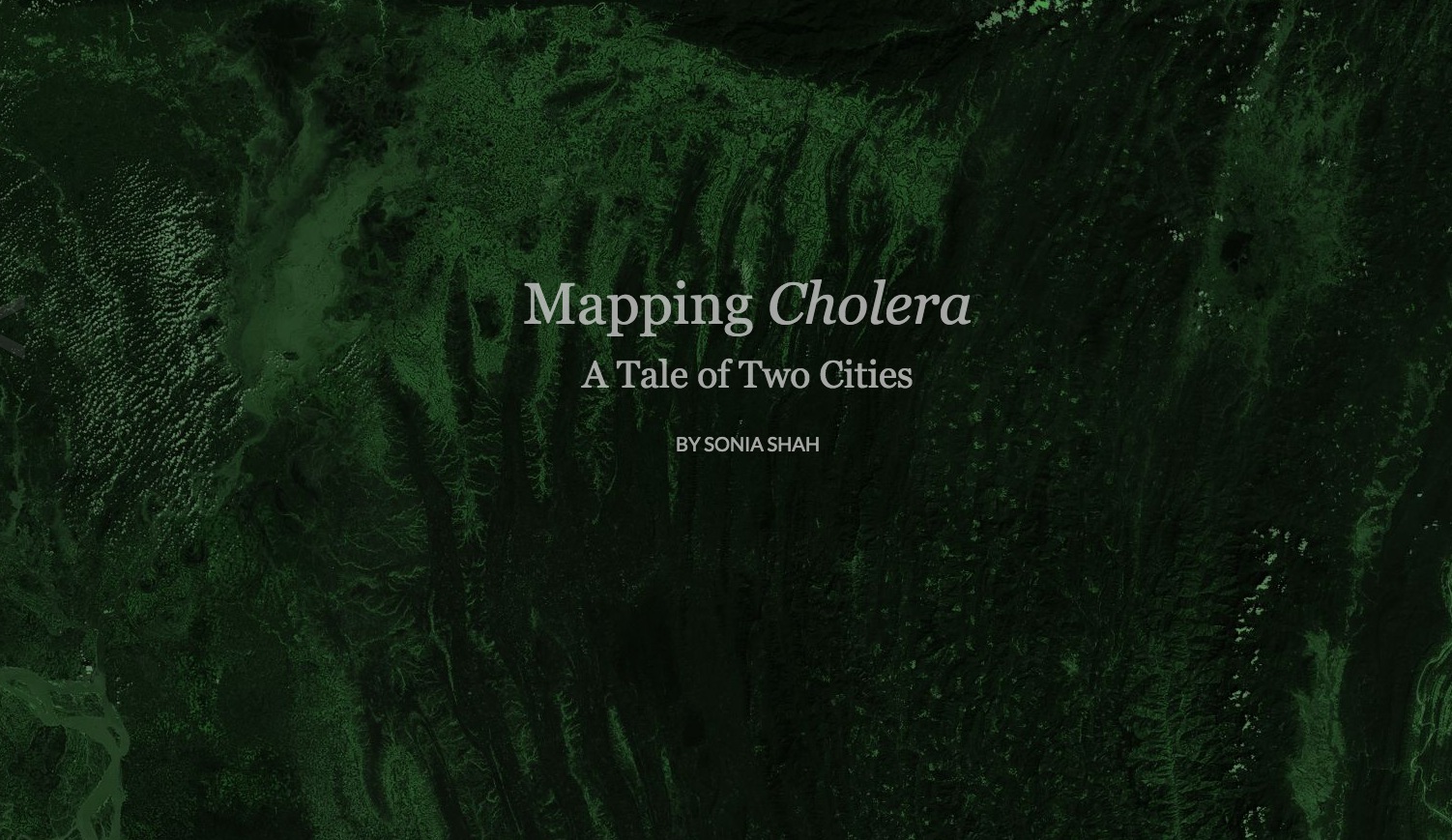
Editor's note: The Pulitzer Center's latest interactive and fully embeddable visualization, "Mapping Cholera: A Tale of Two Cities" is now available in the French language. We invite you to explore this unique resource on the past, present and future of one of the world's most deadly infectious diseases.
Ebola may be the latest never-before-seen pathogen spreading out-of-control in impoverished communities devastated by conflict and environmental catastrophe—but it's not the first. Four years ago this week, a similarly virulent pathogen, expert at preying upon societies where poor sanitation, crowding, and mistrust reign, devastated an island-nation just 800 miles off the coast of Florida, in an out-of-control epidemic that continues to this day.
Cholera is one of the world's most successful pathogens, the culprit behind no fewer than seven global pandemics. Haiti is its most recent conquest. One of its first was New York City, in 1832. Using newly geocoded maps and never-before-plotted data, "Mapping Cholera," tells the story of these two notorious—and forgotten—epidemics that punctuate the long tenure of one of the world's most terrifying, and difficult to tame, pathogens.
With a narrative by science journalist Sonia Shah and interactive maps produced by Dan McCarey for the Pulitzer Center, the interactive provides a look at the searing pathways of two outbreaks. View the French version as featured in Le Monde. And the full article that accompanied the interactive "Mapping Cholera A Tale of Two Cities" in Scientific American.






